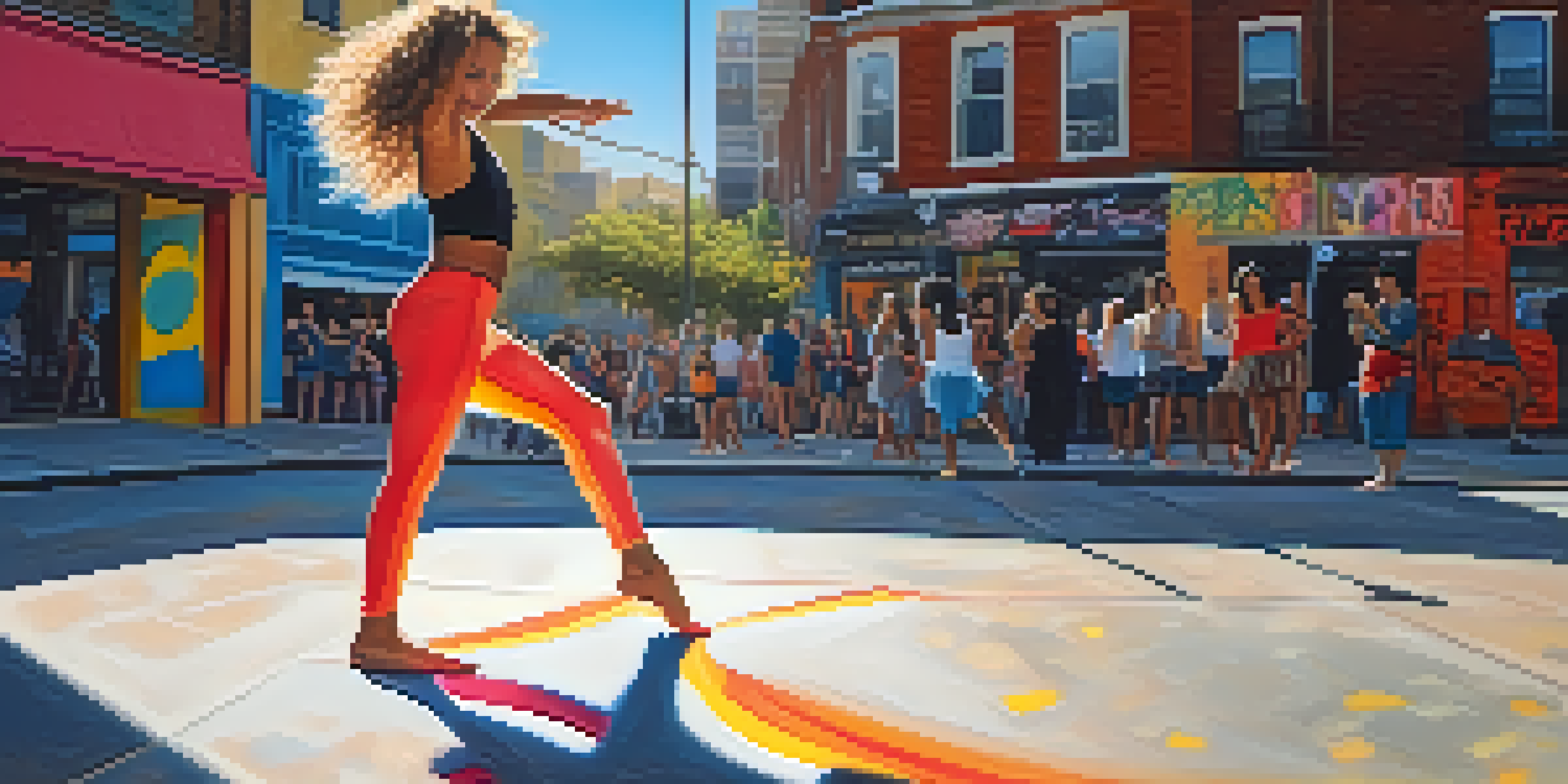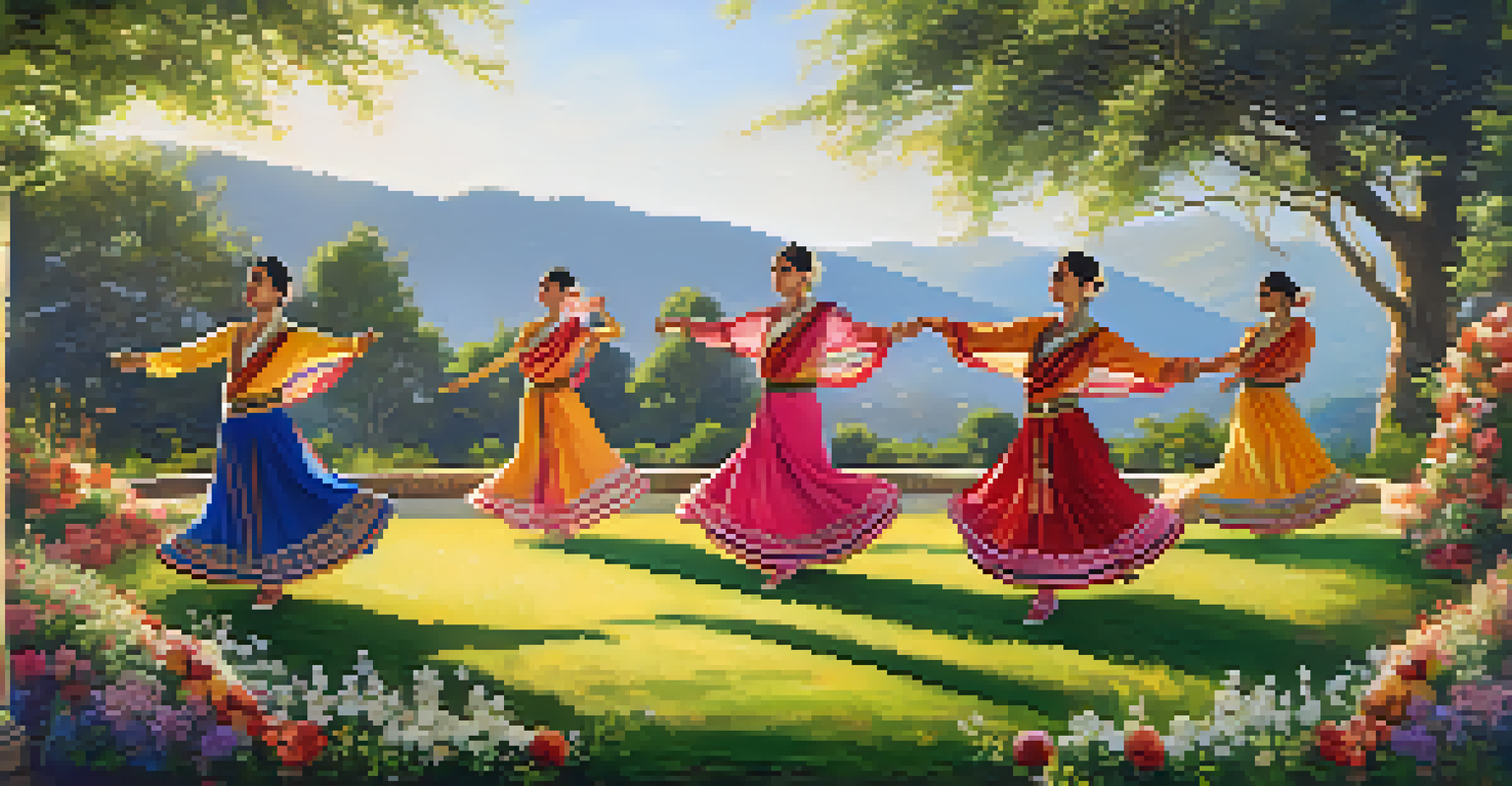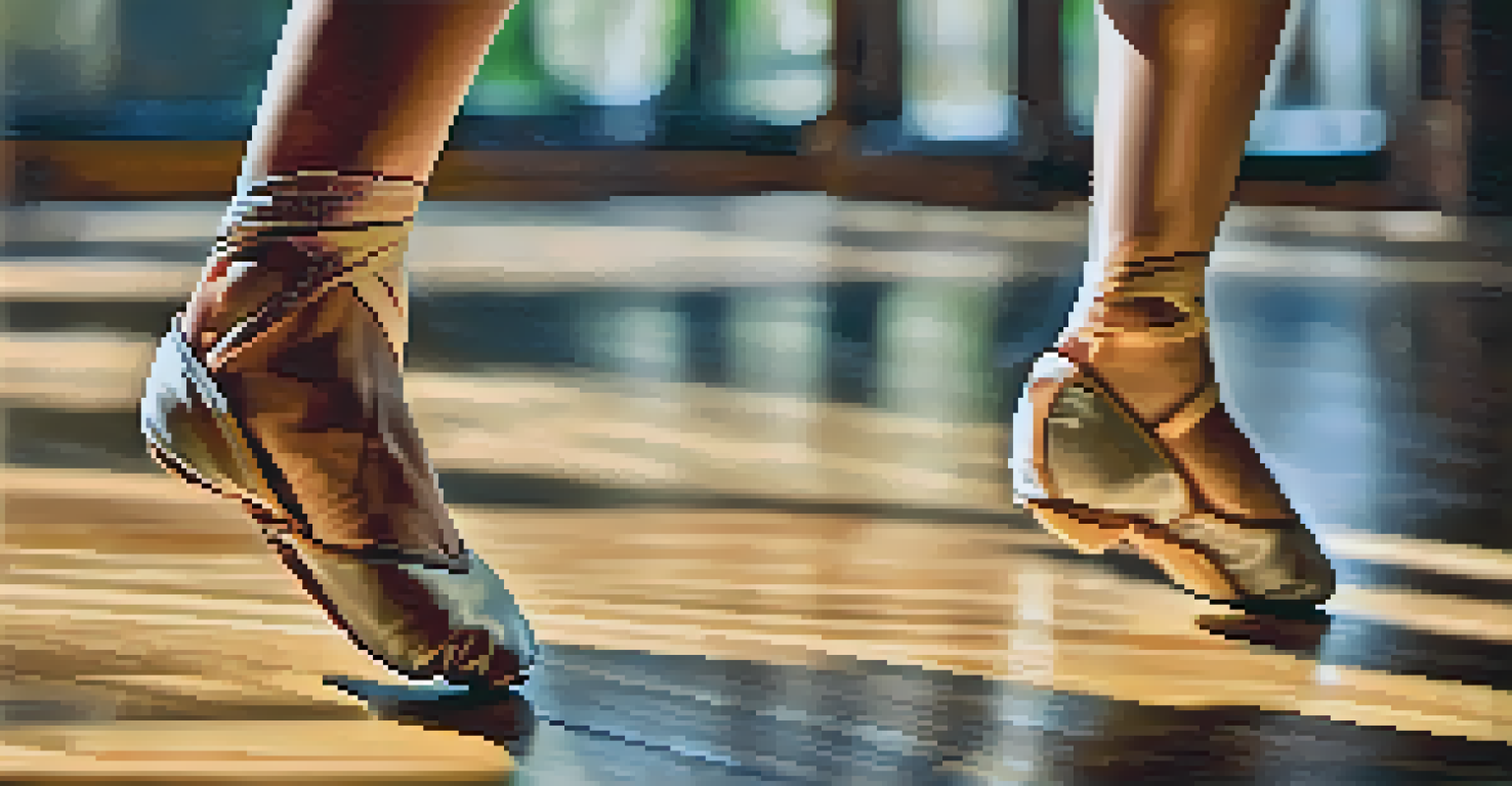Memory in Motion: Dance as a Form of Personal Expression

Understanding Dance as a Personal Expression
Dance is more than just movement; it's a language of emotions. When people dance, they often express feelings that words simply can't capture. This form of expression allows for a unique connection between the performer and the audience, creating a shared experience that transcends verbal communication.
Dance is the hidden language of the soul.
Through various styles, from ballet to hip-hop, dancers convey stories and emotions that reflect their personal journeys. Each movement can evoke memories, feelings, and thoughts, making dance a deeply personal art form. It's fascinating how a simple gesture can remind someone of a cherished moment or a significant life event.
Moreover, dance serves as a powerful outlet for individuals to process their experiences. Whether it's celebrating joy or working through grief, moving to music provides a cathartic release. This connection to personal history makes dance a profound way to express oneself.
The Role of Memory in Dance
Memory plays a crucial role in how we experience and perform dance. Every dancer brings their own history and influences into their movements, making each performance unique. The memories tied to specific songs, styles, or even choreography can enhance the emotional depth and authenticity of the dance.

For instance, a dancer might choose a song that reminds them of a loved one, infusing their performance with nostalgia and sentimentality. This personal connection can resonate with the audience, evoking similar feelings of their own memories. The dance becomes a shared journey through time, allowing spectators to reflect on their own experiences.
Dance as Emotional Expression
Dance transcends words, allowing individuals to convey deep emotions and personal stories through movement.
Additionally, learning choreography often involves recalling past lessons and techniques. This reliance on memory not only helps dancers improve their skills but also deepens their connection to the art form. Each performance becomes a tapestry woven from past experiences, making dance a living archive of personal history.
Cultural Influences on Dance Expression
Dance is heavily influenced by culture, and this shapes personal expression in profound ways. Different cultures have unique movements, rhythms, and meanings associated with dance, providing dancers with a rich vocabulary to express themselves. This cultural backdrop can significantly influence how individuals interpret and embody their personal stories.
Dance is the joy of movement and the heart of life.
For example, traditional dances often tell stories of heritage and community, allowing dancers to connect with their roots. When performing these dances, individuals express not only their own feelings but also the collective memory of their culture. This layered expression enriches the experience for both the dancer and the audience.
Furthermore, contemporary dance often blends various cultural influences, allowing for a fusion of styles that reflects our globalized world. Dancers can draw from multiple traditions, creating a unique expression that is both personal and universal. This interplay between culture and individuality showcases the dynamic nature of dance as a form of expression.
Dance as a Healing Tool
For many, dance serves as a form of therapy, helping individuals to heal from emotional and physical traumas. The act of moving can release pent-up emotions and stress, providing a sense of relief and clarity. This therapeutic aspect of dance highlights its ability to connect the mind and body, fostering overall well-being.
Dance therapy, specifically, is a recognized practice that encourages expression through movement. It allows participants to explore their feelings in a safe and supportive environment, often leading to breakthroughs in understanding oneself. Many find that through dance, they can process emotions they may struggle to articulate verbally.
Cultural Influences Shape Dance
Cultural backgrounds enrich personal expression in dance, enabling dancers to connect their individual stories with collective heritage.
Moreover, group dance can cultivate a sense of community and belonging, which is essential for emotional healing. When individuals come together to dance, they share experiences and support one another, creating a nurturing space for personal expression. This collective healing further underscores the power of dance in individual lives.
The Impact of Technology on Dance Expression
In recent years, technology has transformed the way we create and share dance. From social media platforms to virtual reality, dancers now have new tools for expression and connection. This digital landscape allows individuals to share their stories with a global audience, expanding the reach of their personal narratives.
For example, platforms like Instagram and TikTok have given rise to viral dance trends, where personal expression intersects with collective participation. Dancers can take inspiration from each other, creating a rich tapestry of shared experiences. This exchange fosters community and encourages individuals to explore their own dance styles.
Moreover, technology has also influenced how dance is taught and learned. Online classes and tutorials make dance accessible to many, allowing individuals to express themselves without the barriers of location or resources. This democratization of dance opens up new avenues for personal expression, making it more inclusive than ever.
The Future of Dance as Personal Expression
As we look to the future, the evolution of dance as a personal expression continues to unfold. With ongoing advancements in technology and shifts in cultural perspectives, the ways we express ourselves through dance are bound to evolve. New styles and forms will emerge, reflecting the changing landscape of society and individual experiences.
Moreover, the importance of inclusivity in dance is becoming increasingly recognized. Embracing diverse voices and experiences will only enrich the art form, allowing for a more comprehensive representation of personal expression. This shift encourages everyone, regardless of background or ability, to find their own voice in dance.
Technology Expands Dance Horizons
Advancements in technology have transformed dance, making it more accessible and allowing for global sharing of personal narratives.
Ultimately, dance will continue to serve as a powerful medium for personal expression, helping individuals connect with themselves and others. The beauty of dance lies in its ability to adapt and resonate with each generation, making it a timeless form of storytelling through movement.
Celebrating Dance as a Universal Language
At its core, dance is a universal language that transcends cultural and linguistic barriers. Regardless of where you are in the world, the rhythm of music and the urge to move can unite people in a shared experience. This collective joy underscores the power of dance as a means of personal expression.
Through dance, individuals can celebrate their uniqueness while also finding common ground with others. It's a beautiful reminder that, despite our differences, we can all connect through movement and emotion. This shared experience enriches our understanding of one another and fosters empathy and compassion.

As we celebrate dance, we acknowledge its role in shaping our identities and communities. Whether it's a solo performance or a group celebration, dance allows us to express who we are and connect with the world around us. In this way, dance is not just a form of expression; it’s a celebration of life itself.